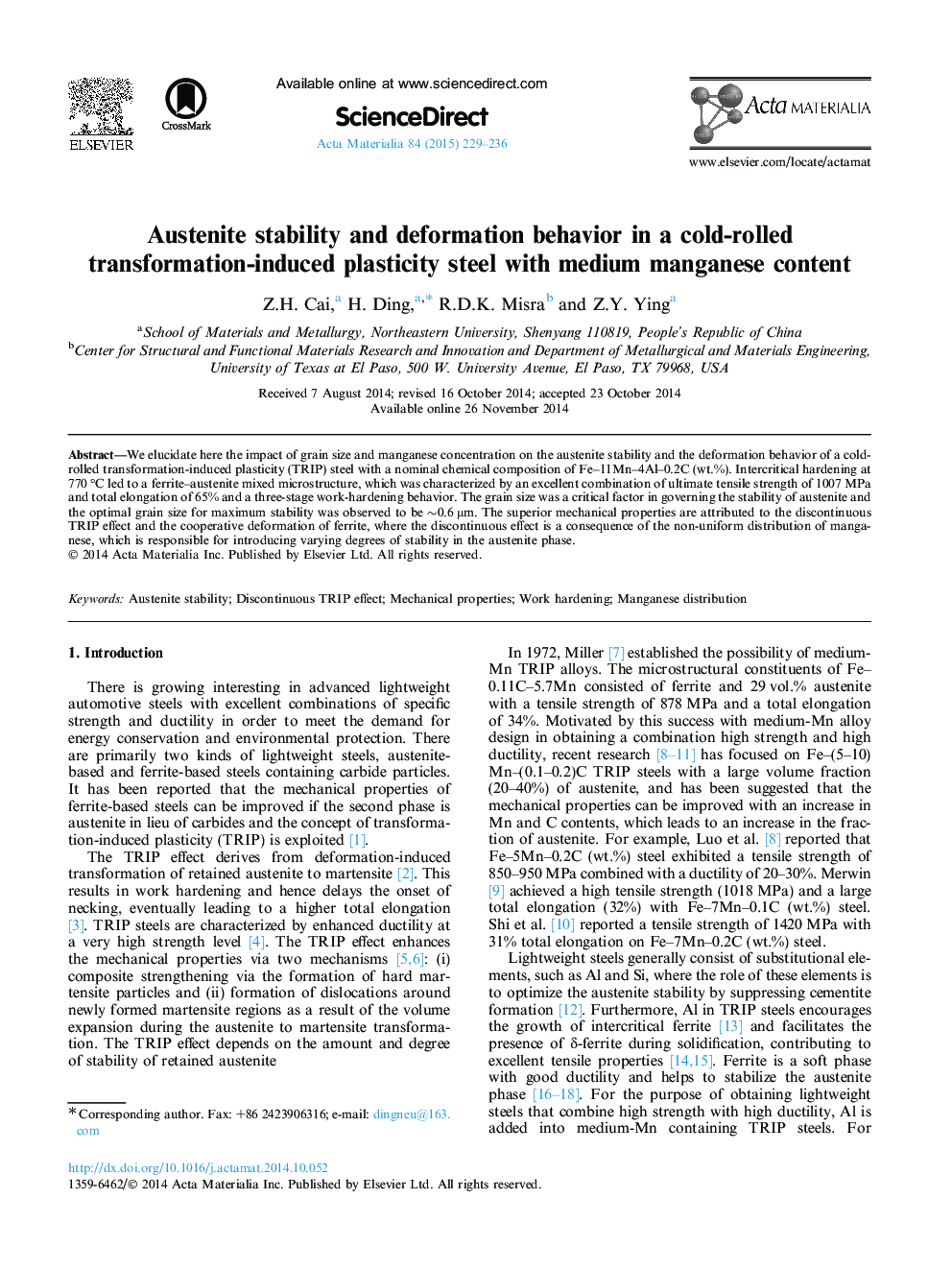| Article ID | Journal | Published Year | Pages | File Type |
|---|---|---|---|---|
| 1445431 | Acta Materialia | 2015 | 8 Pages |
We elucidate here the impact of grain size and manganese concentration on the austenite stability and the deformation behavior of a cold-rolled transformation-induced plasticity (TRIP) steel with a nominal chemical composition of Fe–11Mn–4Al–0.2C (wt.%). Intercritical hardening at 770 °C led to a ferrite–austenite mixed microstructure, which was characterized by an excellent combination of ultimate tensile strength of 1007 MPa and total elongation of 65% and a three-stage work-hardening behavior. The grain size was a critical factor in governing the stability of austenite and the optimal grain size for maximum stability was observed to be ∼0.6 μm. The superior mechanical properties are attributed to the discontinuous TRIP effect and the cooperative deformation of ferrite, where the discontinuous effect is a consequence of the non-uniform distribution of manganese, which is responsible for introducing varying degrees of stability in the austenite phase.
